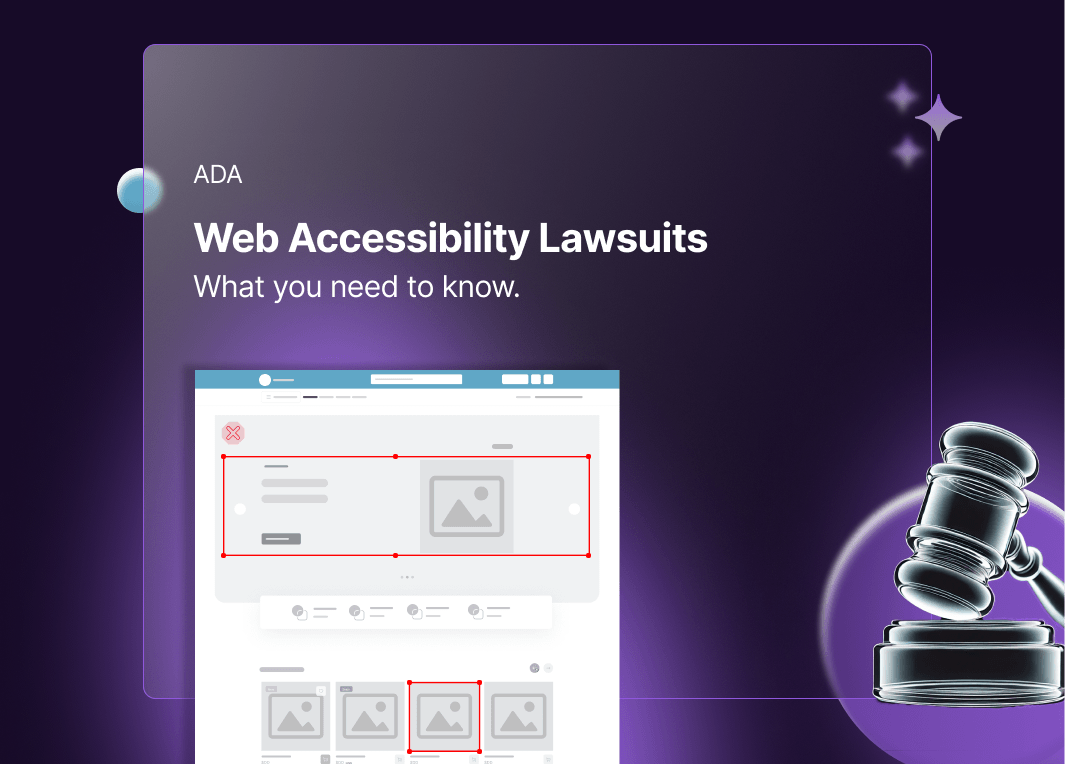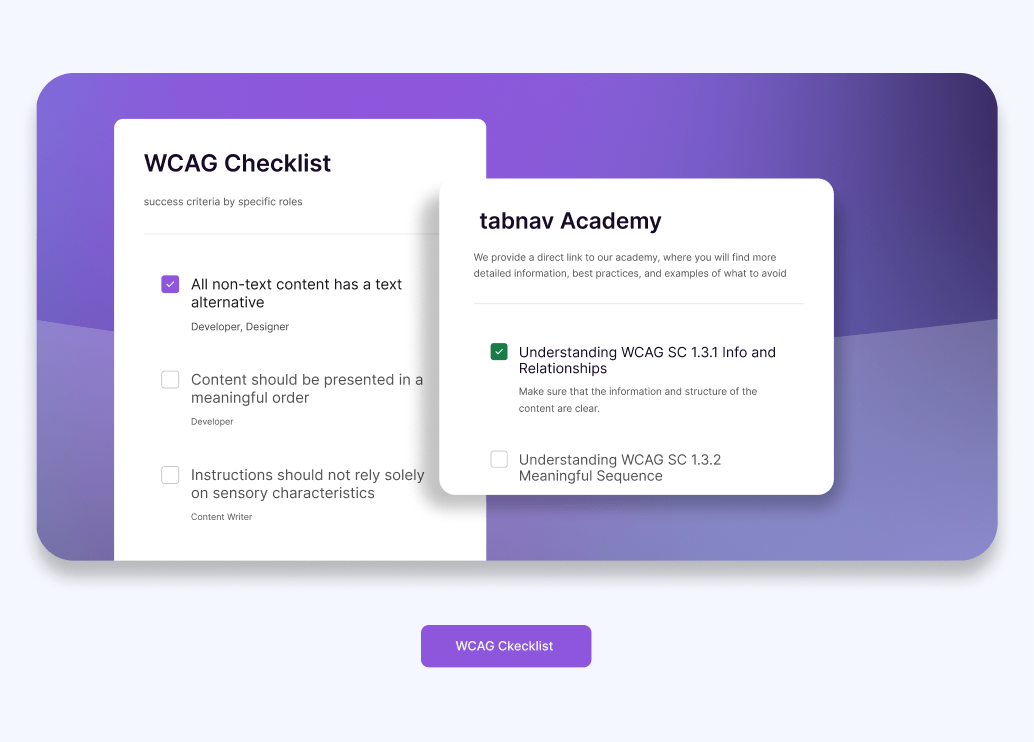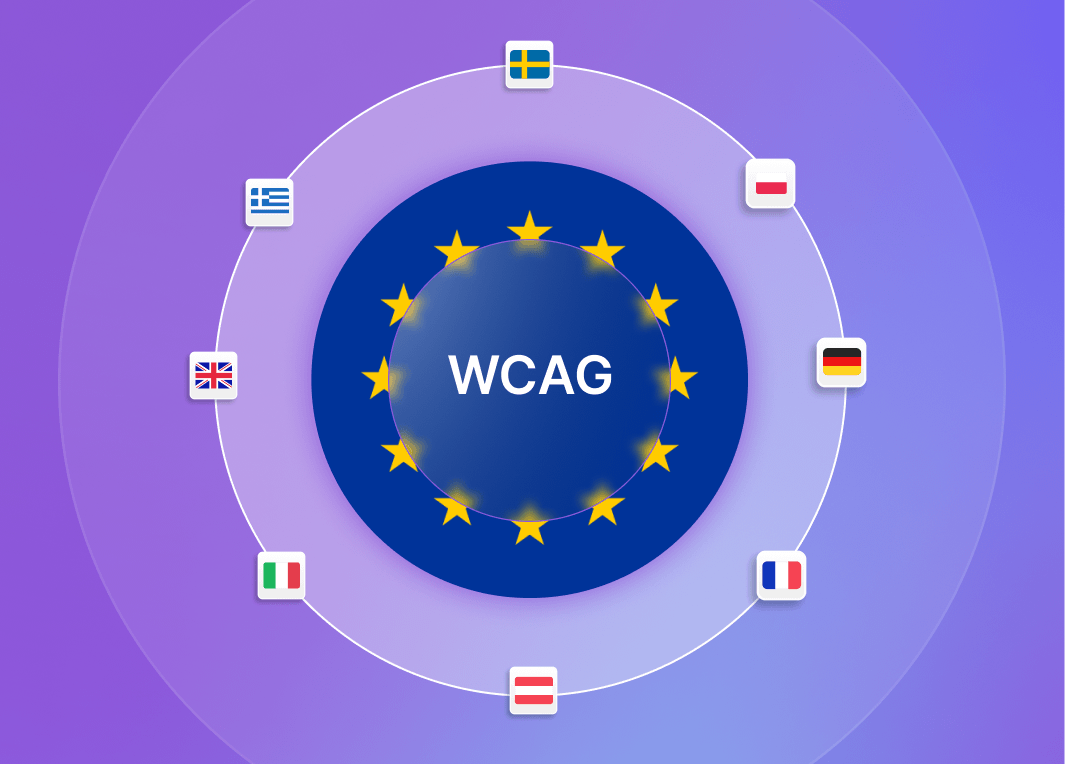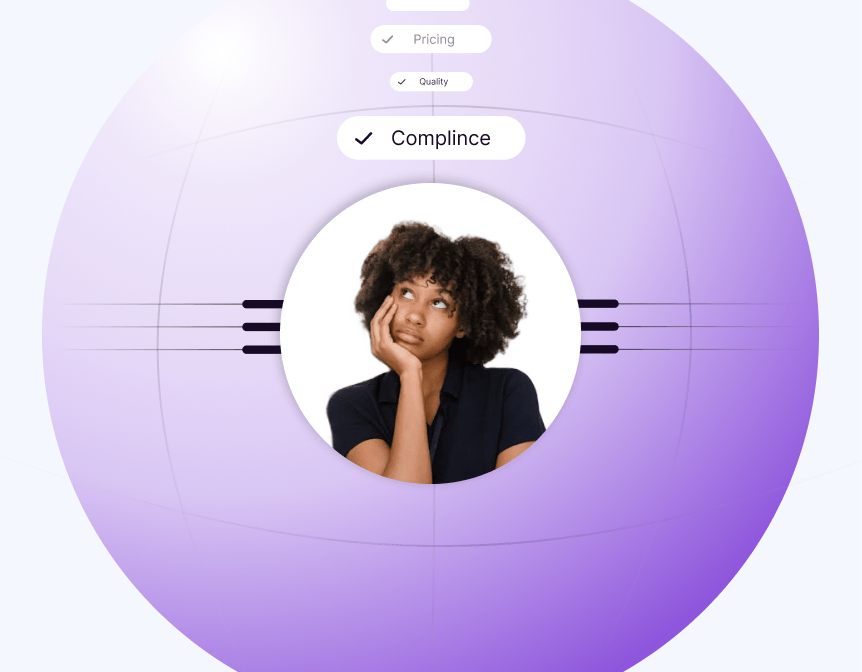How to Handle and Prevent Web Accessibility Lawsuits
May 8, 2024 - Compliance Essentials
Preventing and Navigating Web Accessibility Lawsuits: What Every Business Needs to Know
Web accessibility lawsuits are on the rise, and businesses of all sizes are finding themselves vulnerable. Whether you're looking to prevent these legal challenges or need to defend your company, this guide is here to help. We’ll break down the financial risks of ADA settlements, how to handle threatening emails from dubious companies, and the critical steps to take if you're facing a complaint or lawsuit. Additionally, we’ll explore the pros and cons of different accessibility approaches—automated, manual, or a blend of both—so you can choose the strategy that best fits your needs.
This guide draws on the expertise of seasoned web accessibility professionals, offering you actionable insights to protect your website and business. While we provide comprehensive advice, it’s always a good idea to consult with a legal expert for specific guidance. Remember, web accessibility is not just about following the rules; it's about creating an inclusive online environment for everyone.

Website Accessibility Lawsuit Settlements
When it comes to ADA lawsuit settlements, the costs can quickly add up, especially if your website isn’t accessible to all users. For small businesses, ADA lawsuit settlement amounts typically range from $3,000 to $5,000. This might seem steep, but many companies find it’s more cost-effective to settle than to engage in a lengthy legal battle.
For medium and large businesses, the stakes are even higher. ADA lawsuit settlement amounts for these companies can easily exceed $10,000, depending on the extent of the accessibility issues and the number of people affected..
These figures highlight the importance of making your website accessible now, rather than waiting until you’re faced with an ADA lawsuit.
The Bulk Email Trap: How Unethical Companies Target Businesses
Some companies try to take advantage of businesses by sending bulk emails designed to scare you. These emails might claim that your website has serious accessibility problems and demand that you fix them immediately. Their goal is to make you panic and respond without fully understanding the situation.
These unethical companies send these emails to many businesses, hoping someone will take the bait. The emails can be aggressive, sometimes even threatening legal action if you don’t comply. But it’s important to realize that these emails are often more about making money than actually helping you improve accessibility.
If you respond to these emails without being careful, it could lead to legal trouble. Admitting to the issues they mention might be used against you in court. That’s why your first step should always be to talk to your team before doing anything. It’s crucial to handle these situations carefully.
Also, make sure to check who sent the email. Trustworthy accessibility companies don’t operate this way—they focus on providing honest assessments and practical solutions, not on scaring you into quick decisions. If you receive a suspicious email, take a moment to research the sender and consider asking an accessibility expert if the claims are legitimate.
Remember, responding too quickly to a misleading email can create problems that could have been avoided. By taking your time and involving the right experts, you can protect your business from unnecessary legal headaches and focus on genuinely improving your website’s accessibility.
Responding to Detailed Accessibility Allegations
If you receive a complaint or lawsuit with detailed allegations—complete with screenshots or videos—it's critical to act swiftly and smartly. This is the time to bring in an accessibility expert to manually review your site against the claims. Understanding the best course of action in these cases is crucial. Be aware that your web developer or website manager might not be the right person to involve in this situation. The expertise required here is specific and demands a thorough understanding of accessibility standards.
Steps to Take When Facing a Complaint or Lawsuit
It’s crucial to differentiate between a visitor complaint and a formal lawsuit. If you receive a complaint, respond promptly and professionally, offering assistance and passing the issue to your development team. Avoid admitting fault and consult with an accessibility expert for next steps before replying further. If you receive a lawsuit, immediately consult your legal team and get support from an accessibility expert. Remember, while your legal team can handle the legal aspects, they may lack the technical knowledge needed to properly defend your case. The combination of legal and technical expertise is key to a strong defense.
The Solutions Available for Accessibility and Their Differences
When addressing web accessibility, it's important to understand the 3 primary approaches: automated solutions, manual approaches or both. Each method offers unique benefits and challenges, so knowing the difference can help you choose the most effective strategy for your website.
-
Automated Approaches
- Speed and Efficiency: Automated tools can scan your website quickly, identifying a range of common accessibility issues. They provide immediate feedback, making them ideal for large websites with numerous pages that need frequent monitoring.
- Cost-Effectiveness: These tools are generally more affordable than manual audits. For businesses with limited budgets, automated solutions offer a viable starting point for improving accessibility.
- Evolving Capabilities with AI: Recent advancements in AI technology have significantly enhanced the capabilities of automated tools. While some tools in the past struggled with complex issues like dynamic content and screen reader compatibility, modern AI-powered solutions are increasingly effective at addressing these challenges.
- Risks and Limitations: It’s important to recognize that not all automated solutions are created equal. Some tools may inadvertently make your website less accessible if not properly configured. Therefore, careful implementation and ongoing monitoring are necessary to ensure these tools contribute positively to your site’s accessibility. To help you choose the right provider and keep your website secure, we discuss this topic further in another blog: Are AI Accessibility Widgets Enough?. This can provide you with a better understanding of how to balance cost-effectiveness with comprehensive accessibility.
-
Manual Approaches
- Comprehensive Coverage: Manual testing is conducted by accessibility experts who can detect a wide range of issues, including those that automated tools might miss. This includes evaluating the user experience, ensuring proper keyboard navigation, and verifying screen reader compatibility.
- Tailored Recommendations: Since manual audits are performed by professionals, they offer customized solutions that align with your website’s specific needs and design. This personalized approach can lead to more effective and lasting accessibility improvements.
- Time and Cost Considerations: While manual testing provides deep insights, it can be time-consuming and more costly than automated solutions. However, for businesses dedicated to achieving full accessibility compliance, the investment in manual testing can be well worth the additional time and cost.
-
Combining Both Approaches
- Balanced Strategy: The most effective accessibility strategy often combines both automated and manual approaches. Automated tools can handle routine checks and catch basic issues, while manual testing ensures that more complex, nuanced problems are addressed.
- Comprehensive Accessibility Plan: By leveraging both methods, you can create a robust accessibility plan that covers all aspects of compliance. This hybrid approach helps maintain ongoing accessibility in an evolving digital landscape and ensures that your website remains inclusive for all users.
Free Website Accessibility Scan
Enter your website URL to get a free, instant accessibility scan with tabnav's checker.
Internal Best Practices for Ensuring Your Website Remains Compliant
To maintain and ensure ongoing web accessibility, it's crucial that all internal teams within your company are aligned and coordinated. This section outlines best practices to help your organization stay compliant and foster a culture of accessibility.
-
Establish Clear Roles and Responsibilities
Identify key individuals in your organization who will be responsible for accessibility decisions. This includes content writers, developers, designers, and project managers. Each of these teams should be aware of their role in maintaining website accessibility and should collaborate regularly to ensure consistency across all areas of your site.
-
Involve Accessibility in All Website Changes
Any time a change is made to your website—whether it's a design tweak, content update, or technical modification—the teams responsible for these changes must consult with the designated accessibility lead. This practice helps prevent unintentional accessibility issues from arising and ensures that every aspect of your site remains compliant.
-
Keep the Entire Team Updated
Regular updates and training sessions should be conducted to keep all teams informed about the current status of the website's accessibility. This includes sharing insights from your web accessibility provider, highlighting recent audits, and discussing any areas that need attention.
-
Train Customer Service Teams
Customer service representatives should be trained to recognize and properly handle accessibility-related complaints. It’s essential that these issues are escalated to the person in charge of the website’s accessibility, ensuring they are addressed promptly and appropriately. The accessibility provider should also be informed to ensure any necessary remediation steps are taken.
-
Align Legal and Accessibility Teams
Your legal team should work closely with the accessibility provider to ensure that all responses to complaints or legal actions are aligned. This collaboration is vital for maintaining a unified front and ensuring that any communication or legal defense is consistent and well-informed.
This guide explores the growing issue of web accessibility lawsuits and provides strategies to protect your business or respond effectively if faced with one. With the increasing frequency of these lawsuits, it's vital to understand how to avoid becoming a target or defend your company when necessary. While this guide offers valuable insights from experienced web accessibility experts, it's essential to remember that it doesn't replace the need for legal counsel.
At tabnav, we have solved some of the most challenging accessibility barriers and are experts in web accessibility with years of experience. If you have any questions or need assistance, feel free to contact us today





